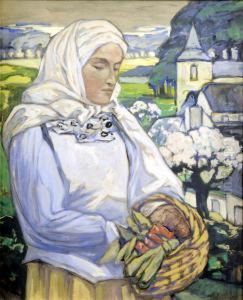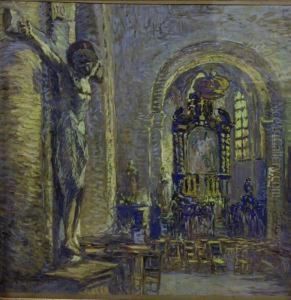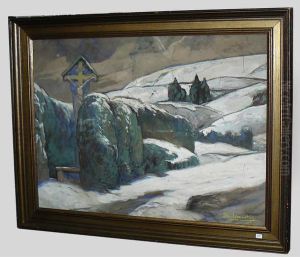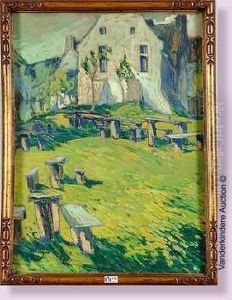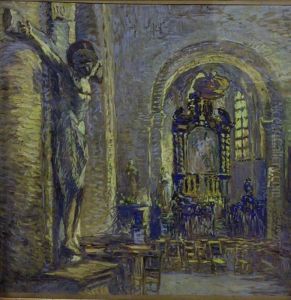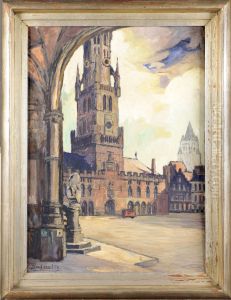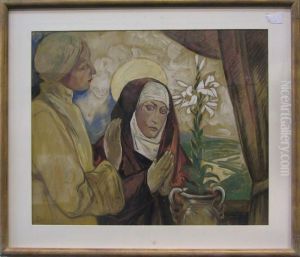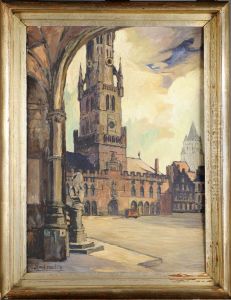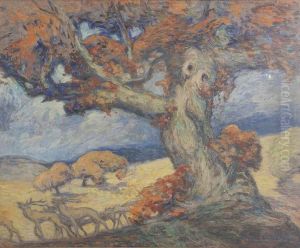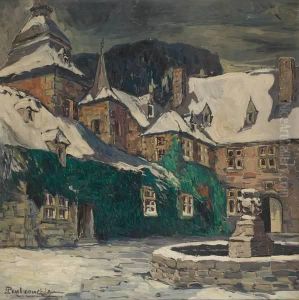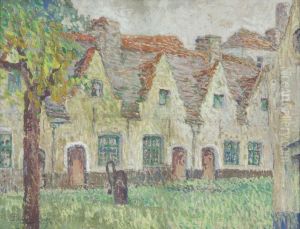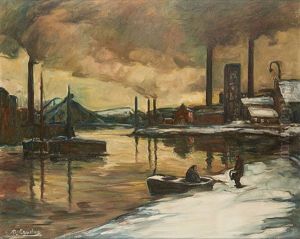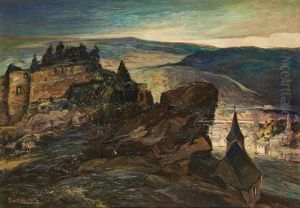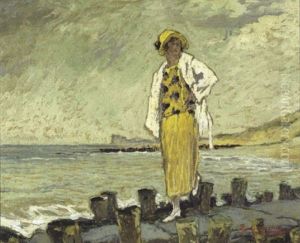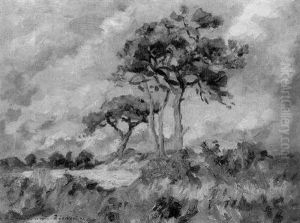Paul Cauchie Paintings
Paul Cauchie was born in Ath, Belgium, in 1875. He was an architect, painter, and decorator, renowned for his work in the Art Nouveau style, which was popular in Europe at the turn of the 20th century. Cauchie studied at the Academy of Fine Arts in Brussels, where he was influenced by the burgeoning Art Nouveau movement, characterized by its use of organic shapes and lines, and an emphasis on craftsmanship.
After completing his education, Cauchie began working as an artist and architect, and he married his wife, Lina Voet, who was also an artist. Together, they collaborated on various projects, with Lina often contributing to the decorative elements of Cauchie's designs. One of the most notable aspects of Cauchie's work was his use of sgraffito, a technique involving layers of plaster and paint to create intricate murals and designs on the facades of buildings.
In 1905, Paul Cauchie designed his own house in Etterbeek, Brussels, which served as a testament to his artistic vision. The house, known as 'Maison Cauchie', is considered one of the finest examples of Art Nouveau architecture in Belgium and features extensive sgraffito decorations, both inside and out. It has since been restored and is open to the public as a museum dedicated to Cauchie's work and the Art Nouveau period.
Throughout his career, Cauchie also taught at various institutions, sharing his knowledge and passion for art and design with younger generations. His work contributed significantly to the architectural landscape of Brussels, where many of his buildings can still be seen. Paul Cauchie passed away in 1952, leaving behind a legacy as one of Belgium's prominent Art Nouveau artists and architects.
